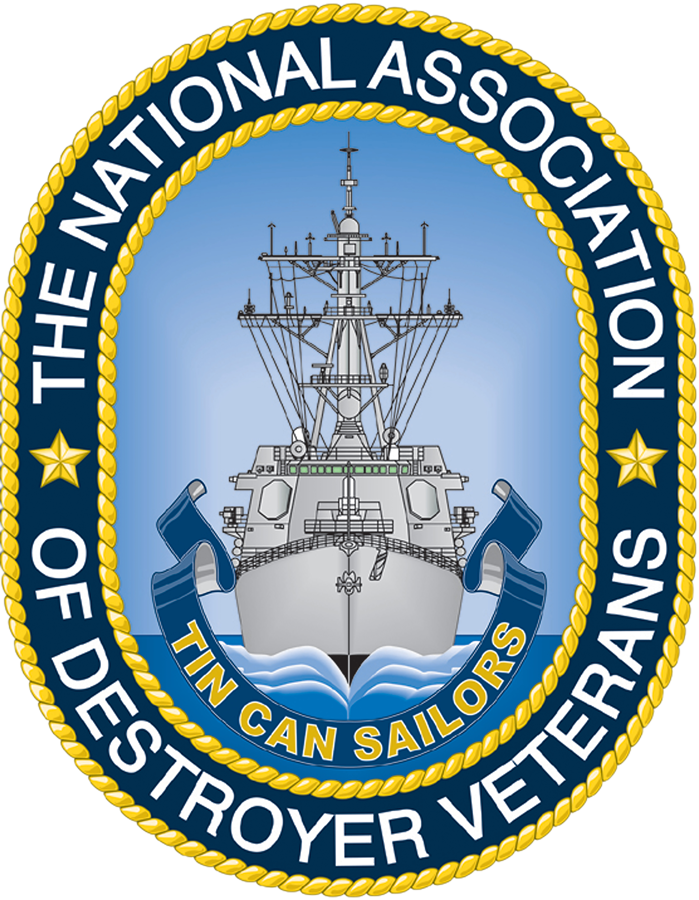The Anti-Submarine Rocket (ASROC)
By Robert F. Sumrall (DD-762)
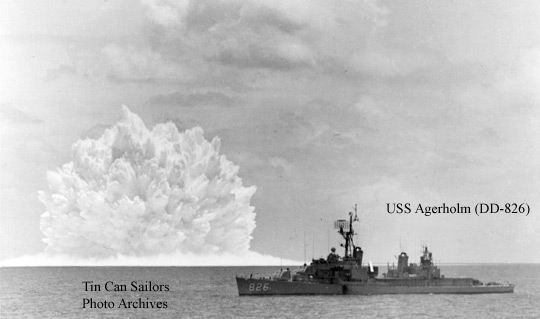
The threat posed by high-speed, high-endurance Soviet submarines was of grave concern to U.S. military planners in the 1950s. No longer was it likely a destroyer could get close enough to drop depth charges directly over a submarine. “Stand off” weapons would be needed to attack at a considerable distance. ASROC had a 10,000-yard range, about the same as the new SQS-23 sonar. Together they made a potent combination.
The ASROC Weapons System was first installed in the USS NORFOLK (DL-1) followed by these classes:
- CHARLES F. ADAMS (DDG-2)
- FARRAGUT (DLG-6)
- SPRUANCE (DD-963)
- GEARING (DD-710) FRAM I
- FORREST SHERMAN (DD-931) ASW modifications
- LONG BEACH (CGN-9)
- And several classes of Destroyer Escorts.
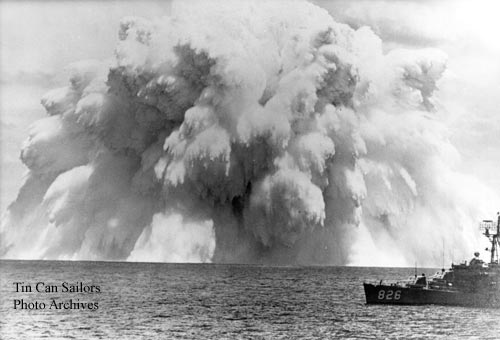
The MK 112 box-like, eight-barrel launcher was the visible part of the group that, to everyone, was commonly known as the “ASROC.” It served as a ready service magazine for eight ASROC missiles and positioned them for firing. The launcher was divided into four double guides, each housing two missiles in an over-under arrangement. It was similar to a gun mount in that it had a stand, or carriage, secured to the deck. One guide was elevated at a time. The missiles were fired at a constant launching angle of 45 degrees from the horizontal. The launcher was stabilized so a constant launching angle could be maintained in a rolling, pitching sea.
The cells were temperature controlled because extreme conditions could cause the missiles to malfunction and overheat, igniting the rocket motors. Each cell had a solid door forward and a soft closure aft. The closure aft was blown out by the missile blast during firing and was replaced when the cell was reloaded. Each cell had a restraining latch and snubber mechanism that prevented any movement of the missile until released for firing. Just prior to firing, the door was opened and the guide rail was extended to the proper length to direct the missile out of its cell and into the correct path of flight.
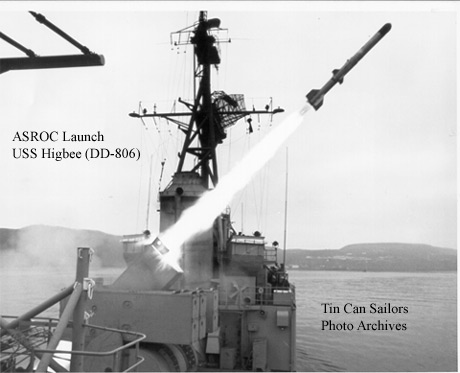
The control station for firing the missiles was a blast proof enclosure located near the launcher. It housed the Launcher Captain’s Control Panel. The panel enabled the launcher captain to train and elevate the launcher, select a rail and missile, extend a rail and open its door, clear selections, fire the missile, and immobilize the launcher.
The Launcher and Missile Simulator was also located in the ASROC launcher control station. The simulator provided training for operating personnel without moving the launcher or closing a firing circuit and thus eliminated any chance of an accidental missile firing.
The ASROC missile was a solid-fuel, rocket-propelled, ballistic missile, which could be assembled with a payload of either an antisubmarine acoustic-homing torpedo or a nuclear depth charge. Each missile was about 15 feet long had four component sections: the payload, rocket motor, airframe, and ignition and separation assembly.
The torpedo arrangement used either the Mk 44 or Mk 46 torpedo while the depth charge arrangement delivered the W 44 nuclear warhead. Both versions were fitted with special nose caps to improve the aerodynamic flight of the missile and protect the nose of the torpedo or depth charge when entering the water. The torpedo used a parachute for the last part of its flight while the depth charge was fitted with folding fins for stabilization in the final portion of its trajectory.
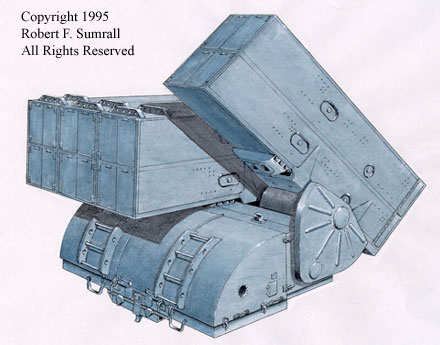
The missile flight sequence was the same for either the torpedo or depth charge until the final stage of the flight. When the missile reached the predetermined velocity required to propel the payload in its ballistic trajectory to the intended point of entry in the water, an explosive block in the ignition and separation assembly was electrically detonated and the rocket motor was discarded. At another predetermined point, near the height of the trajectory, another explosive block separated the payload from the airframe.
In the torpedo-carrying arrangement, the parachute was activated and the torpedo was armed when the airframe was discarded. The parachute slowed the descent of the torpedo to a safe water entry velocity. The nose cap was shattered and the parachute discarded upon impact, which allowed the torpedo to begin its search pattern.
When the nuclear depth charge payload separated from the airframe section, it continued on its trajectory to the intended water entry point. Its nose cap also shattered on impact and the stabilizing fins were discarded. The depth charge, having been armed before launching, sank and was detonated at a preset depth.
The nuclear depth charge version of ASROC was tested only once. On 11 May 1962, about 370 miles off San Diego, the USS AGERHOLM (DD-826) fired an ASROC as the “Swordfish” shot of the Operation Dominic I series of nuclear weapons tests. AGERHOLM launched the missile at a target raft some 4,000 yards away. The resulting blast was approximately as powerful as the one that destroyed Hiroshima.
Among the ships participating in the Swordfish shot were RICHARD B. ANDERSON (DD-786), HOPEWELL (DD-681), BAUSELL (DD-845), MADDOX (DD-731), BRUSH (DD-745), PRESTON (DD-795), and SAMUEL N. MOORE (DD-747).
